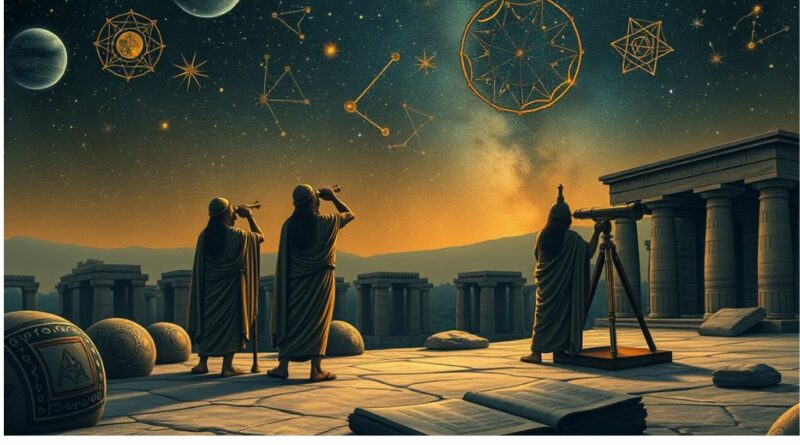Sumerians: Stargazers or Keepers of Divine Knowledge?
Over 6,000 years ago, in the fertile crescent of Mesopotamia, the Sumerian civilization emerged as one of the earliest known societies. Renowned for their innovations in writing, law, and architecture, the Sumerians also left behind a legacy that continues to baffle historians and scientists alike: their astonishingly accurate knowledge of astronomy and other advanced sciences.
The Solar System in Clay
The Sumerians created intricate clay tablets depicting the solar system with remarkable precision. These ancient maps show the sun at the center, surrounded by planets, including some not visible to the naked eye, such as Uranus and Neptune. How did a civilization without telescopes or modern tools achieve such accuracy? Some researchers argue that the Sumerians may have inherited this knowledge from an even older, lost civilization. Others propose that their understanding of celestial mechanics was so advanced that it rivals our own.
Gods, DNA, and the Anunnaki
Among the Sumerian artifacts are depictions of giant beings, referred to as the Anunnaki, who were considered gods. Intriguingly, some of these figures are accompanied by symbols that bear a striking resemblance to the double-helix structure of human DNA. This has led to speculation that the Sumerians may have had knowledge of genetics or that their “gods” were extraterrestrial beings who manipulated human biology.
Zecharia Sitchin, a controversial author, popularized the idea that the Anunnaki were ancient astronauts who came to Earth in search of gold and genetically engineered humans to serve as labourers. While mainstream scholars dismiss these claims as pseudoscience, the similarities between Sumerian symbols and modern scientific concepts continue to fuel debate.
Medical Symbols Ahead of Their Time
The Sumerians also used symbols related to medicine that closely resemble the caduceus and other modern medical emblems. Their understanding of anatomy and healing practices was surprisingly sophisticated for their time. Clay tablets describe medical procedures and herbal remedies that suggest a deep understanding of the human body.
A Civilization Ahead of Its Time?
The Sumerians’ achievements raise profound questions about the origins of human knowledge. Were they simply brilliant innovators, or did they receive guidance from an external source? The possibility that they were far more advanced than we give them credit for challenges our understanding of human history.
As we continue to study their artifacts and decipher their texts, the Sumerians remind us that the past may hold secrets we have yet to uncover. Whether their knowledge came from their own ingenuity or from the stars, their legacy continues to inspire awe and wonder.



